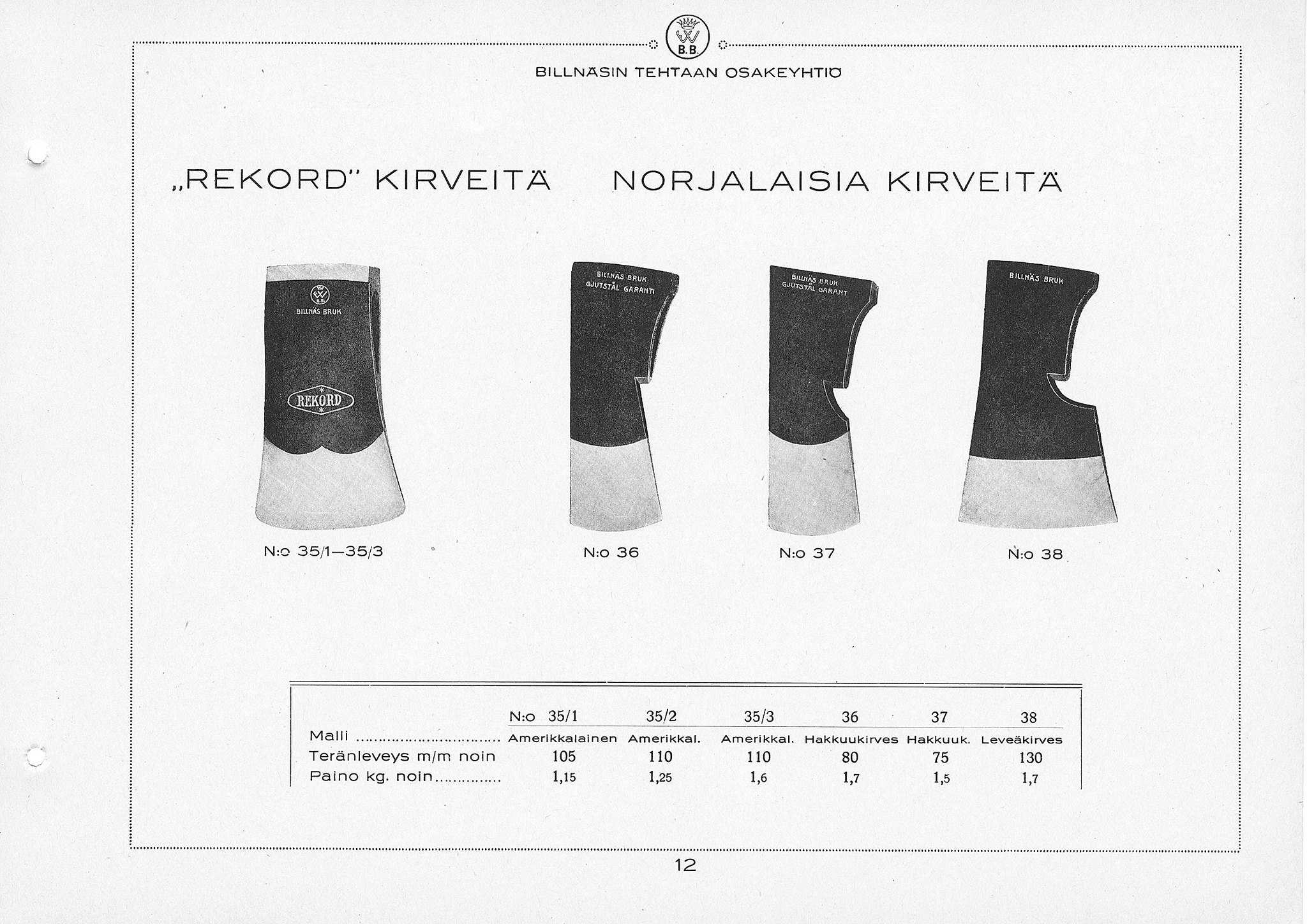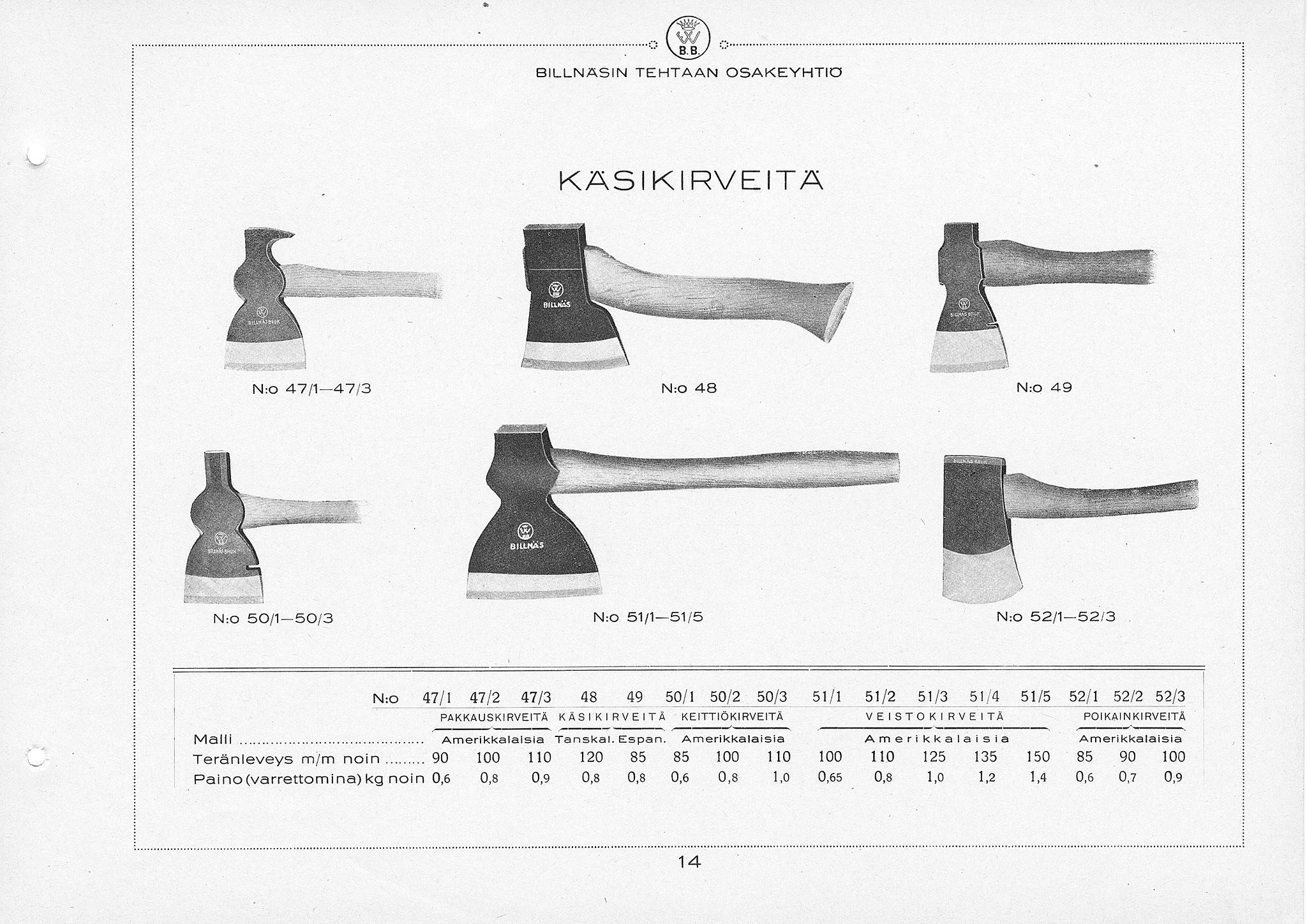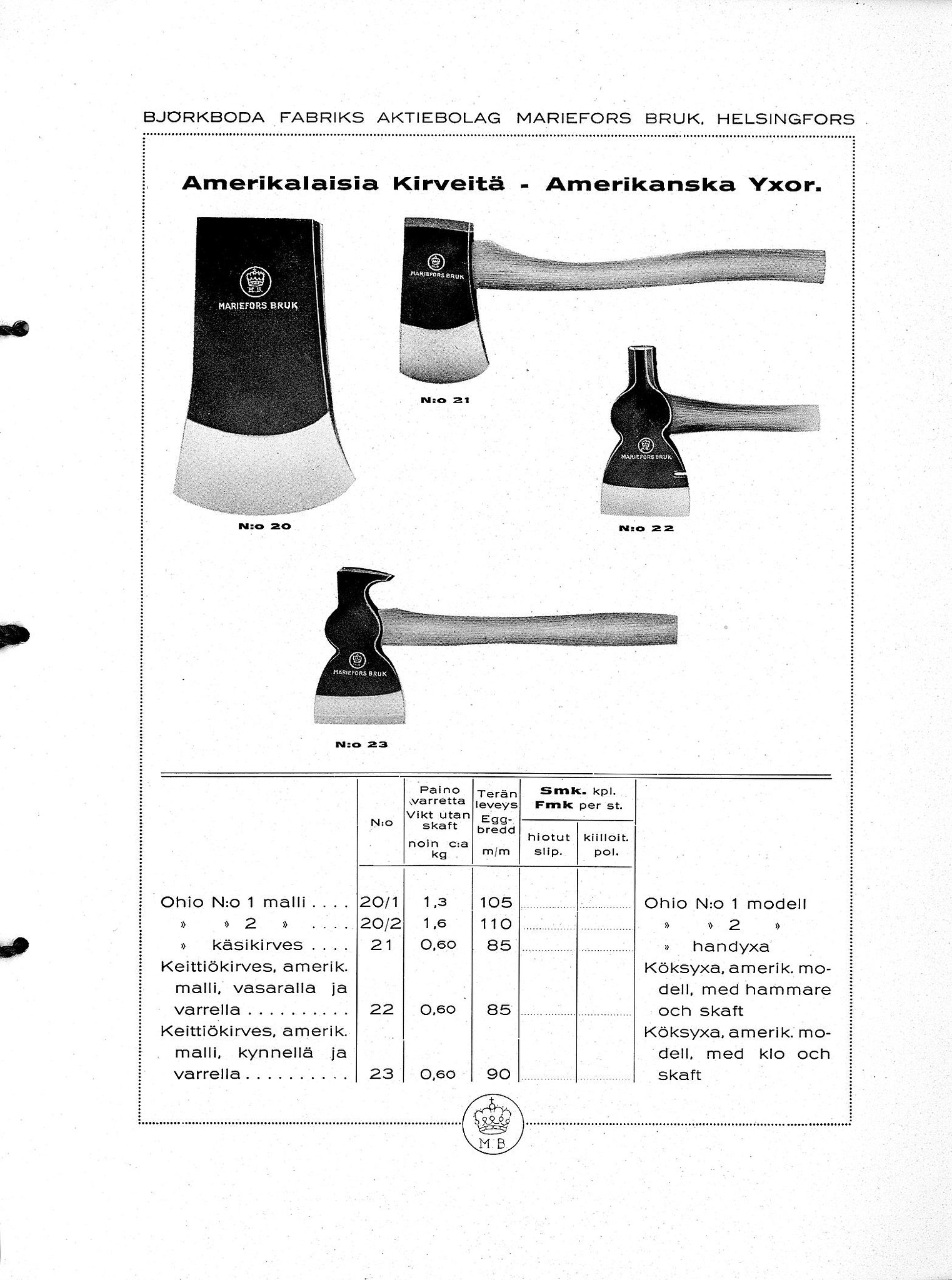- Joined
- Mar 10, 2011
- Messages
- 2,690
Thanks for posting that video,Bob,very interesting.Info on Piilu is far and few between,this is VERY informative.
You are welcome.
Bob
The BladeForums.com 2024 Traditional Knife is available! Price is $250 ea (shipped within CONUS).
Order here: https://www.bladeforums.com/help/2024-traditional/
Thanks for posting that video,Bob,very interesting.Info on Piilu is far and few between,this is VERY informative.
The Finnish Handcrafters Association presents: Piilu hewing workshop
[video=youtube;FLoeSvQLLW8]
Bob
I'm very glad You liked!
The Finnish axes (aka suomalainen kirves) is very popular in russian North-West- it's one of best woods axes, carpenters axes, timber axes and splitters.
In practical use- my lovely kirves is the Billnas No7- most universal touristic axe.











Hello Agent_H!
The term Americanized refers to the whole axe including the handle. They were sold both with the handles and without but usually people bought them without the handles because they were cheaper that way. I own one billnäs "Canadian felling axe" that has the original paint on the handle and on the axe head. I consider it to be propably the most valuable axe i own because its very rare and has the original factory made handle and paint on it.
The reason Billnäs started making these was because the Finnish immigrants who returned from America prefered these American patterns over traditional Finnish paterns.
Agent_H,i think that the handle on your 7(beautiful specimen,that!)is a fairly old handle,made by hand,birch of course,and by someone who was an old hand,And a consummate,superlative craftsman.I'd definitely keep it(an use it as a pattern),just lap the taper a bit more,till it's tight,leaving about 1/2" sticking through,and wedge...
"Americanized in that context refers to head, eye, and bit shape, and eye shape, but also handle style?...."
I think that it refers to all of the above,and mostly stems from the eye.Europeans don't have any species of haft-wood to match hickory.When Swedish companies started targeting the American markets they used a common to american axes eye,and ordered hickory wholesale to haft them with.Using the European Ash,or Beech,the eye just has to be larger,to accommodate more wood volume,as they're not as hard,and tough,as hickory.
In general,we,the axe-nuts,have decreed somewhere along the line that the local hafting species determine the size/shape of the eye of the regional axes,and most of us seem to subscribe to that now,it seems.
The handle Shape,from what i understand,have risen in America in part due to the something like 300+ axe-manufacturers competing for the market in the 19th c.,each trying to outdo another on aesthetics as well,the elegance,the shapeliness(sexiness,let's admit it!of the haft and the fawnsfoot....
The attraction was not lost on Europeans,they love the style,just have no wood for it,unless they import hickory!....(and they do,as much as they can afford,it's actually a sad issue,the scarcity and expense of replacement handles for american axes there...



You are welcome.I thought that axe was interesting. Most "broad axes" I am familiar with are thinner and single bevel.
Bob
Excellent discussion,thanks everyone for all the info...Great point,Ollie,i was entirely unaware of that,and odd,too,for why would people with their own axemanship traition so old,and deep,and established,suddenly be willing to change,so abruptly?!Fascinating,really...
Agent_H,i'm sorry,i'd not know enough about the subject to even venture a guess...That downturn,as well as the mushroom,Are very traditional,but does it stem from function?(would some argue that this american curve+fawnsfoot also have more to do with ergonomics,vs styling?)...Great anthropology,this,in any case!
AND,you're doing a fantastic job on those handles,right on!(i do exactly the same here,buy air-dried,flat-sawn hickory 2" thick...)...
Turbo4x4 will drop in and contribute more,but i believe that in the NW Russia,areas close to the Finnish border,the giant box-stores carry those iconic handles for Suomi kirves,as a regular shelf-item....





Hello again!
Im sorry Agent_h but i have the billnäs felling axe at my summer cottage and i dont go there too often but when i go there next time i will make sure to take photos of it.
But what i do have is pictures of my grandfathers old axes and billhooks that he used and i thought that some of you would find them interesting.



Jake pogg, The most famous and maybe even the best blacksmith that makes piilu style axes is a gentleman called Martti Sipilä from Saarijärvi Finland but i think he has retired since i cant find any information about him on the internet. But if you ask me about who would i get any axe made in Finland it would be hands down Martti Malinen from Niinisaari Finland.
